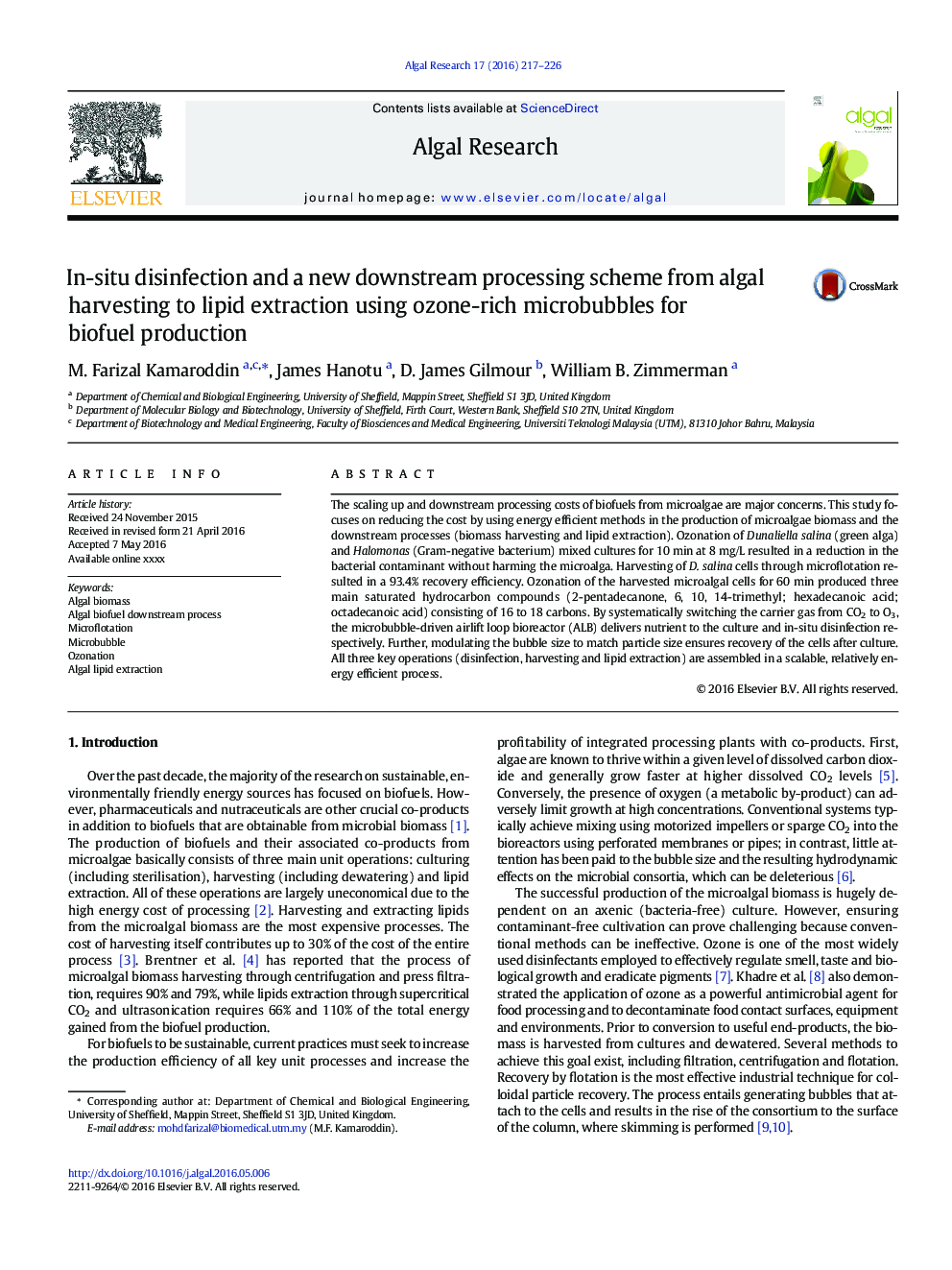| Article ID | Journal | Published Year | Pages | File Type |
|---|---|---|---|---|
| 8086819 | Algal Research | 2016 | 10 Pages |
Abstract
The scaling up and downstream processing costs of biofuels from microalgae are major concerns. This study focuses on reducing the cost by using energy efficient methods in the production of microalgae biomass and the downstream processes (biomass harvesting and lipid extraction). Ozonation of Dunaliella salina (green alga) and Halomonas (Gram-negative bacterium) mixed cultures for 10Â min at 8Â mg/L resulted in a reduction in the bacterial contaminant without harming the microalga. Harvesting of D. salina cells through microflotation resulted in a 93.4% recovery efficiency. Ozonation of the harvested microalgal cells for 60Â min produced three main saturated hydrocarbon compounds (2-pentadecanone, 6, 10, 14-trimethyl; hexadecanoic acid; octadecanoic acid) consisting of 16 to 18 carbons. By systematically switching the carrier gas from CO2 to O3, the microbubble-driven airlift loop bioreactor (ALB) delivers nutrient to the culture and in-situ disinfection respectively. Further, modulating the bubble size to match particle size ensures recovery of the cells after culture. All three key operations (disinfection, harvesting and lipid extraction) are assembled in a scalable, relatively energy efficient process.
Related Topics
Physical Sciences and Engineering
Energy
Renewable Energy, Sustainability and the Environment
Authors
M. Farizal Kamaroddin, James Hanotu, D. James Gilmour, William B. Zimmerman,
